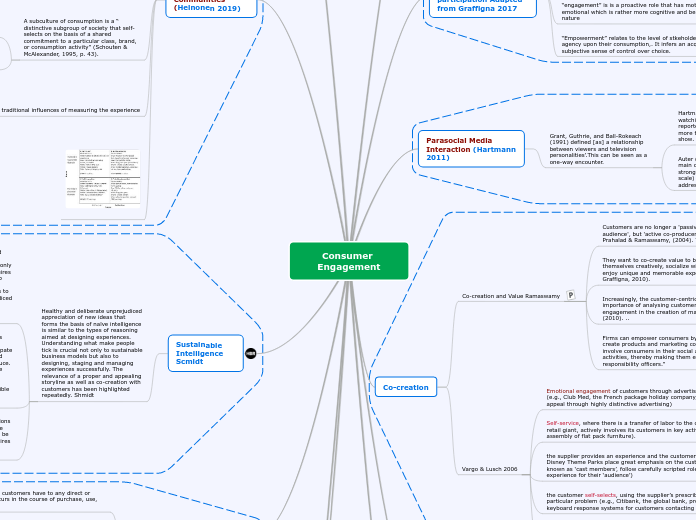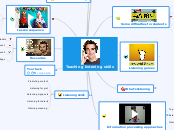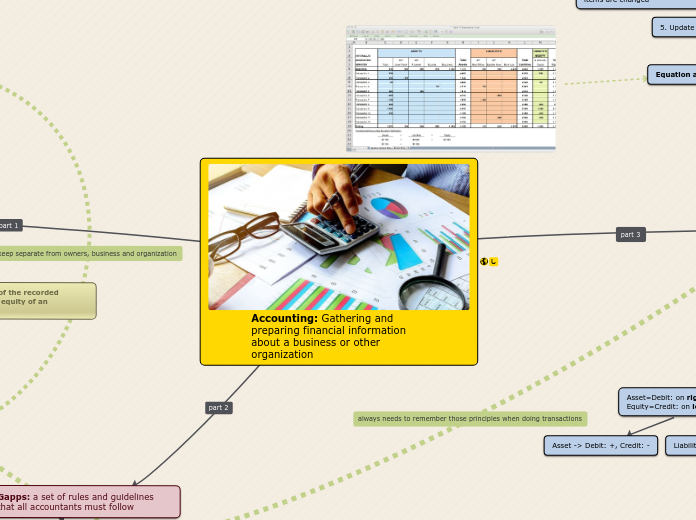Consumer Engagement
Brand Communities (Valaitis, 2011)
Structures
the other is user satisfaction of member organizer interactions.
one is user satisfaction of member to member
interactions
one is user satisfaction of member to member
interactions, and the other is user satisfaction of member organizer interactions.
Hedonism is to obtain a more positive community experience through members establishing social relationships and platform interactions. Resources are one of the main reasons for users to go to the community. One of the reasons for promoting users to go to the community is to find some public class resources and some needed learning materials(Valaitis et al., 2011).
Community information is an important aspect of attracting customers. Consumers enter the brand community mainly for its function and hedonic nature. Information sharing and communication in the community is one of its functions (Bothma, 2020).
Social Media Challenges (Hofacker 2016)
Trends
Sociological
Networks favor interaction between people all around the world.btopic
Marketing
Social media function as a marketspace in which both buyers and sellers exist along with various exchange facilitators (Kaplan & Haenlein, 2010), all interacting with each other in complex ways (Hennig-Thurau, Hofacker, &Bloching, 2013).
Economics
social media have an important value for the firms that own them, although often users do not pay for these services.
Consumption
for a variety of consumption-related tasks such as complaining about a brand or sharing purchase experiences.
Contrary to goods and services, information is highly liquid; it flows and makes barriers, like national borders, permeable, complicating the web regulations, for instance in terms of content copyright or international trade licenses. But the border of the firm has become more permeable as well, and sometimes this is prob-lematic. There are frequent database trades or thefts by hackers, with major networks attacks by organized groups or governments (Fernandes, Soares, Gomes, Freire, & Inácio, 2014
Marketers have long acknowledged the notion that the customer co-creates value (Vargo & Lusch, 2004). Marketing is a process of performing acts in interaction with the customer, who is an operant and essential resource for the firm. Customer participation may include labor, infor-mation, service specification, quality control, knowledge sharing and specific competencies (e.g. design) (Mustak, Jaakkola, & Halinen, 2013).
Schwager & Meyer 2007
Customer satisfaction is essentially the culmination of a series of customer experiences or, one could say, the net result of the good ones minus the bad ones. It occurs when the gap between customers’ expectations and their subsequent experiences has been closed. To understand how to achieve satisfaction, a company must deconstruct it into its component experiences.
Indirect contact most often involves unplanned encounters with representations of a company’s products, services, or brands and takes the form of word-of-mouth recommendations or criticisms, advertising, news reports, reviews, and so forth.
Customer experience is the internal and subjective response customers have to any direct or indirect contact with a company. Direct contact generally occurs in the course of purchase, use, and service and is usually initiated by the customer.
Sustainable Intelligence Scmidt
Healthy and deliberate unprejudiced appreciation of new ideas that forms the basis of naïve intelligence is similar to the types of reasoning aimed at designing experiences. Understanding what make people tick is crucial not only to sustainable business models but also to designing, staging and managing experiences successfully. The relevance of a proper and appealing storyline as well as co-creation with customers has been highlighted repeatedly. Shmidt
Narrative intelligence is the reasoning, learning and actions needed to successfully make use of the fact that people are ‘narrative animals’ (Mateas & Sengers, 1999). You need to be able to explain what it is that you are aiming for. This requires communication and storytelling techniques. Melissen & Moratis, 2016, 2017
Native intelligence is the reasoning, learning and actions needed to convince stakeholders – policy-makers, civil movements, employees, consumers, and so on – to participate in and support (shaping) your value creation processes and using the products, services and/or experiences they produce. Applying this type of intelligence links to understanding the importance of local value creation processes and local networks, a reciprocal relationship with nature, and taking matters into your own hands instead of relying on an invisible hand. (Griskevicius et al., 2012).
ubtopic
Naïve intelligence is the types of reasoning, learning and actions needed to escape the lock-in of our current socio-economic system. Developing these arrangements cannot only rely on existing knowledge and technologies and thus requires a certain freshness, openness and intuitiveness to come up with new solutions, a new way of doing things. Naïve intelligence is not the same as ignorance but rather relates to applying ‘a certain level of healthy and deliberate unprejudiced appreciation of old and new ideas, and the assumptions behind existing and new business models, through a truly reflexive process.
Value creation Communities (Heinonen 2019)
4 traditional influences of measuring the experience
(3) community engagement in social media.
(2) impression management by the firm
1) social networking reference group
A subculture of consumption is a “ distinctive subgroup of society that self-selects on the basis of a shared commitment to a particular class, brand, or consumption activity” (Schouten & McAlexander, 1995, p. 43).
Consumer tribes, rather than revolve around a focal brand, focus on a broader hybrid of prod- ucts and services (Canniford, 2011).
Brand communities, in turn, are specialized, non geographically bound, and partly imaginary communities based on devotion to a specific brand (Muñiz & O’
Guinn, 2001).
On-line value creation (Heinonen, 2018)
If people in powerful positions continue to hire and cast only people who look like them, sound like them, come from the same neighbourhoods they grew up in, they will never have a great understanding of experiences different from their own…. The beauty of social media, it’s completely democratic. Everyone has a say. Everyone’s voice counts, and everyone has a chance to paint the world from their own perspective. (p. 144) Brown on Beyonce 2018
Value is seen as perceived and experienced by customers with the focus on the notion that “products perform services that provide the relevant value creating experiences” (Holbrook, 2006, p. 715)
i.e a consumers relates a service experience to their previous service interactions (SerQUAL)
Current marketing concentrates on the ways customers experience firm activities and processes and the interactive moments of truth related to the value co-creation between custom- ers and fi rms (Baron & Harris, 2010).
This suggest that value is created by the company!
Holbrook (1996) defines consumer value as an ‘interactive relativistic preference experience’, i.e., the argument is that experience defines what is valuable to a customer.
Payne, 2007
Conscious Capitalism (Mackey and Sisoda 2014)
Grewal 2017
the company fosters a culture of trust, authenticity, caring, transparency, integrity, learning, and empowerment.
the business should be led by conscious leaders who mentor, motivate, develop, inspire, and serve people in accordance with and through the firm’s purpose and values.
the business should be managed to provide simultaneous benefits to all stakeholders—society, partners, investors, customers, employees, and the environment—instead of just focusing on maximizing returns to investors.
Every business should operate with a higher purpose, along with a deeply held set of core values.
firms can enhance the customer experience by engaging with customers at three, hierarchical engagement levels:
Example World Surf league 2019 Season Preview
Surfing is an ancient practice, but it captured the world’s attention in the 1960s, making an indelible mark on music, film, and pop culture. The sport’s popularity has only grown since then, and the Championship, Big Wave, and Longboard tours now draw the attention of fans worldwide. The World Surf League (WSL) broadcasts those and other events, streaming live video to television partners and social media.
WSL is a digital-first sports league by design, because no one knows exactly when the wave conditions will be right. Events are planned around a two-week time window at locations around the globe. When the surf is up, the competition begins. Being all-digital allows WSL to publish content fast and stream surfing events as they occur. Using a mobile app, fans can watch live broadcasts and keep up to date with their favorite WSL athletes anywhere, anytime. https://cloud.google.com/customers/world-surf-league/
emotional connection
shared identity
outstanding expereince
Principle of good faith in Stakeholder Engagement, Dawkins, 2014
Totality of Conduct
Good faith is directed toward determining the intentions or mindset of the involved parties (Cox 1958), and as with most human interaction, making a determination entail both art and science.
The second aspect of conferring in good faith is to justify claims and demands with reason so as to indicate a desire to reach an agreement.
The first requisite of good faith is to compel the parties to confer about their positions and demands and obviously this objective cannot be met without dialogue, the exchange of concerns between two parties.
Quinn and Jones (1995) propose basic moral principles that constitute minimums in business settings, three of which intersect the principle of good faith. First, honoring agreements is necessary in order to make binding contracts. Second, honesty is a prerequisite for the efficient functioning of markets, and third, respecting autonomy recognizes that individuals have a right to liberty, without which contracts would not be morally binding.
The principle of good faith is derived from the Latin term bona fides connoting an honest and sincere effort
Engagement and Authenticity Sutton 2019
Authenticity, (in destination tourism) refers to the degree to which a site is perceived to be genuine (Kolar & Zabkar, 2010), is a specific and crucial attribute that is relevant to film-induced tourism (Rittichainuwat, Laws, Scott, & Rattanaphinanchai, 2018). The importance of authenticity for destination success has been recognized and discussed by researchers and practitioners (Bryce, Curran, O'Gorman, & Taheri, 2015; Yi et al., 2017) because of its relationship with positive monetary value and high purchase frequency (Castéran & Roederer, 2013).
Kahn's theory of engagement suggests that the more authentic a person can be at work (i.e. the more they can show of their whole self) the more engaged they will be (Glavas, 2016). Van den Bosch and Taris (2014a) suggest that authenticity may be an antecedent of work engagement, and (Reis et al., 2016) argue that authentic employees are more likely to work in jobs that fi t their core values, or at least to undertake their work in ways that feel more congruent, and this is likely to result in increased engagement.
Kahn (1990, p. 700) defined engagement as the “ simultaneous employment and expression of a person's ‘ preferred self’ in task behaviours” during work role performance.
Saks and Gruman (2014) note that engagement is promoted as a key factor in organisational success and identify a wide range of outcomes, including greater return on assets, increased profitability and customer satisfaction, improvements in safety, positive job attitudes and decreased turnover
Co-creation
Vargo & Lusch 2006
Co-designs Customer and supplier sengage in the especially important activity of co-design of products (e.g., Intuit, the producers of ‘Quicken’ financial software, use every employee as a ‘listening post’ to gain profound customer insights which are utilized in helping customers co-design their products).
the customer self-selects, using the supplier’s prescribed processes, to solve a particular problem (e.g., Citibank, the global bank, provides interactive voice and keyboard response systems for customers contacting their call center).
the supplier provides an experience and the customer is part of this context (e.g., Disney Theme Parks place great emphasis on the customer experience. Employees, known as ‘cast members’, follow carefully scripted roles to create a ‘theatre’ experience for their ‘audience’)
Self-service, where there is a transfer of labor to the customer (e.g., IKEA the Swedish retail giant, actively involves its customers in key activities such as transportation and assembly of flat pack furniture).
Emotional engagement of customers through advertising and promotional activities (e.g., Club Med, the French package holiday company, creates a strong emotive appeal through highly distinctive advertising)
Co-creation and Value Ramaswamy
Firms can empower consumers by offering opportunities to co-create products and marketing communication. They can also involve consumers in their social and cause-related marketing activities, thereby making them effectively “corporate social responsibility officers.”
Increasingly, the customer-centric logic emphasizes the importance of analysing customers' active participation and engagement in the creation of marketing value Kumar et al., (2010). ..
They want to co-create value to build their identities, express themselves creatively, socialize with other consumers and enjoy unique and memorable experiences (Gambetti & Graffigna, 2010).
Customers are no longer a 'passive audience', but 'active co-producers ' Prahalad & Ramaswamy, (2004). T.
Parasocial Media Interaction (Hartmann 2011)
Grant, Guthrie, and Ball-Rokeach (1991) defined [as] a relationship between viewers and television personalities’.This can be seen as a one-way encounter.
Auter (1992)reports viewers of a TV sitcom in which the main characters looked directly into the camera reported stronger parasocial interaction (measured by the PSI scale) than viewers watching episodes without addressing.
Hartmann and Klimmt (2005) reported TV users watching an episode of a German crime series reported stronger levels of parasocial processing and more they felt addressed by the main character of the show.
Engagement, Involvement and participation Adapted from Graffigna 2017
“Empowerment” relates to the level of stkeholder power and of agency upon their consumption,. It infers an acquisition of the subjective sense of control over choice.
“engagement” is is a proactive role that has motivational and emotional which is rather more cognitive and behavioral in its nature
activation” differs from the concept of “engagement” since it is mainly referred to the knowledge, attitude, and skills of consumption based on choice and self-management which is often linked to co-creation;
Holbrook and Hirschman 1982
emotions, contextual, symbolic and non-utilitarian aspects of consumption
Graffigna 2017 Consumer brand engagement
Consumer engagement has also been associated with an increased tendency of consumers to advocate a brand in their peer-networks, mainly through social media (Kozinets et al., 2010; Libai et al., 2010; Brodie et al., 2013).
the ability of the brand to generate emotional attachment is considered to be one of the antecedents of consumer engagement (Morrongiello et al., 2017).
Consumer brand engagement has been defined as the level of a consumer’s cognitive, emotional and behavioral investment in specific brand interactions (Hollebeek and Chen, 2014).
“the attitude, behavior, the level of connectedness (1) among customers, (2) between customers and employees, and (3) of customers and employees within a firm” Hollebeek et al., 2016, p. 6
The consumer becomes an active agent in the relationship with the brand (Van Doorn et al., 2010) but also that s/he incorporates attributes of the brand itself into personal self-expression and determination (Sprott et al., 2009).









